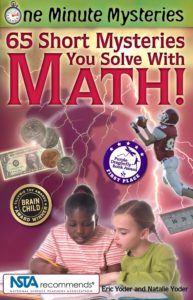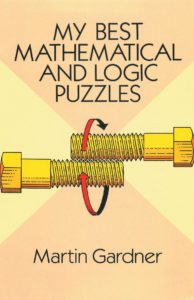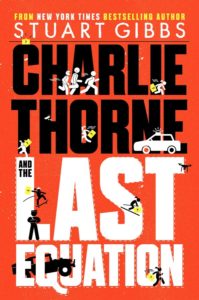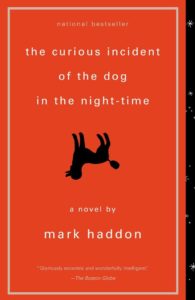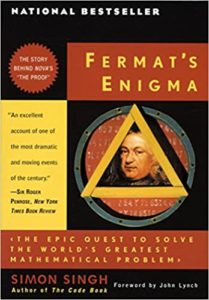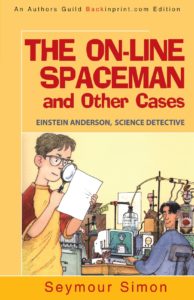
|
Reminiscent of the brainy Encyclopedia Brown is Seymour Simon’s Einstein Anderson, 6th-grade science whiz, who uses his scientific expertise to solve mysteries. There are several titles in the series, among them The On-Line Spaceman and Other Cases (iUniverse, 2009), The Invisible Man and Other Cases, and The Gigantic Ants and Other Cases. These are, infuriatingly, largely out of print, but are available in inexpensive used editions or can be found at the library. A great pick for science buffs ages 8-12 and well worth tracking down. |
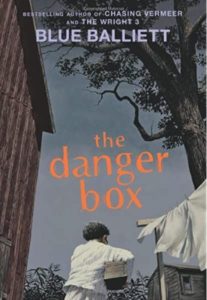
|
In Blue Balliett’s The Danger Box (Scholastic, 2012), 12-year-old Zoomy – so near-sighted that he’s legally blind – has been raised by his grandparents. Then his alcoholic father shows up and leaves with Zoomy a stolen box that contains an old notebook. The identity of the author of the notebook is the major mystery of the book – hints are provided through Zoomy’s personal newspaper, the Gas Gazette – though Zoomy and his friend Lorrol must also solve plenty of puzzles and cope with a criminal who wants the box and notebook back. The secret scientist (Spoiler!) is Charles Darwin. For ages 9-13. |
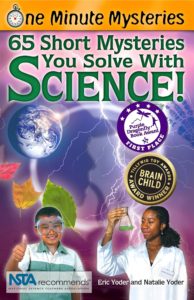
|
By Eric Yoder and Natalie Yoder, One Minute Mysteries: 65 Mysteries You Solve With Science (Platypus Media, 2008) is a collection of short catchy stories, the solutions to which require a knowledge of science facts. (For example, how do you know which zoo employee was bogus? Answer: she sent visitors to the bird house to see bats.) Each mystery is followed by a short paragraph of explanation. Fun for ages 8-12. |
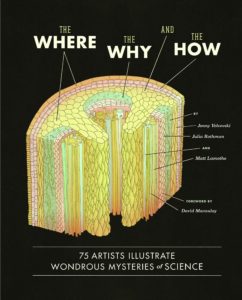
|
Julia Rothman’s The Where, the Why, and the How (Chronicle Books, 2012) pairs short science essays with interpretive illustrations by 75 artists. The theme is unanswered mysteries of the natural world, large and small: What existed before the Big Bang? How does gravity work? Why do cats purr? Why do we dream? Fascinating and thought-provoking. For teens and adults. |
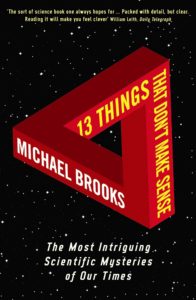
|
Michael Brooks’s 13 Things That Don’t Make Sense (Vintage, 2009) tackles the puzzling mysteries and anomalies that science has yet to cope with, among them cold fusion, signals from space, free will, and the placebo effect. For teens and adults. |
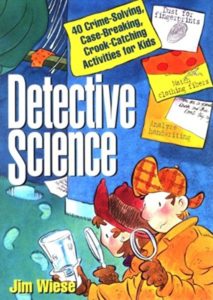
|
Jim Wiese’s Detective Science (Wiley, 1996), subtitled “40 Crime-Solving, Case-Breaking, Crook-Catching Activities for Kids,” is a collection of hands-on experiments and activities involving everything from mapping crime scenes and interviewing witnesses to fingerprinting, ballistics, DNA testing, and handwriting analysis. Clear explanations follow each experiment and periodic “Detective Science in Action” boxes give accounts of investigators using science in the real world. For ages 9-13. |
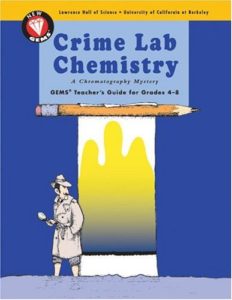
|
The GEMS (Great Explorations in Math and Science) series from UC Berkeley’s Lawrence Hall of Science has several science activity guides for young hands-on detectives, In “Fingerprinting,” for grades 4-8, kids learn how to record, classify, and identify fingerprints; in “Crime Lab Chemistry,” for the same age group, they study paper chromatography (figure out which pen wrote the ransom note); and in “Mystery Festival” (grades 2-8), they survey a range of crime-lab procedures and use them to solve mysteries. |
|
Check out this list of STEM-based Crime Scene Investigation Activities. |
|
From Popular Mechanics, this list of Science’s Greatest Unsolved Mysteries includes eight, among them the origin of life, the secret of immortality, and the cure for cancer. |
|
|
ScienceMystery is a collection of interactive science mysteries to solve online, targeted at middle- and high-school-level students. Among these are “Croak,” a mystery about frog extinctions; “The Blackout Syndrome,” which involves a strange disease outbreak; and “Angry Red Planet,” about a disintegrating biosphere. |
|
The UnMuseum is devoted to science mysteries, science hoaxes, strange science, and science on the edge. A fascinating and multifaceted site, variously covering science in the news, archaeological mysteries, cryptozoology, amazing inventions, and more. |







